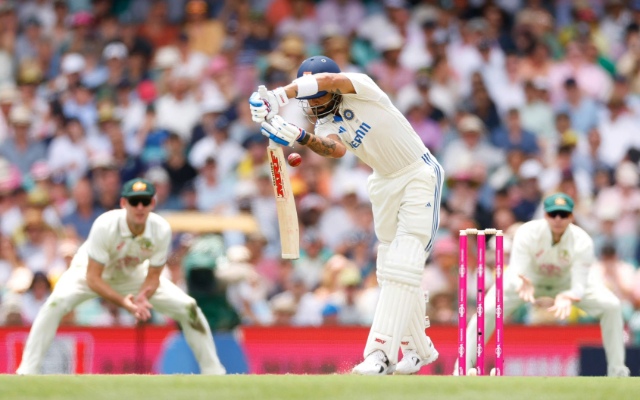The cover drive is often called the most elegant shot in cricket—a perfect blend of timing, balance, and technique. It is admired for its grace, precision, and visual appeal, making it a hallmark of a technically sound batter. However, the way the cover drive is executed varies significantly between Test cricket and T20 formats, including domestic leagues like the IPL.
In this blog, we explore the differences, challenges, and significance of the cover drive in Test cricket versus T20s, highlighting how top players adapt their technique to suit different formats.
The Cover Drive in Test Cricket
Test cricket, often referred to as the format of patience, demands technique, temperament, and adaptability. In Tests, the cover drive is usually played with an emphasis on:
- Perfect timing: Batters often wait for a ball that is in the “hitting zone” outside off-stump.
- Balance and stability: With longer innings, maintaining a steady stance and controlled movements is critical.
- Precision and placement: Instead of power, Test cover drives focus on finding gaps between fielders.
- Defensive readiness: The batter is ready to defend or leave the ball if the delivery is outside the line.
Example: Sachin Tendulkar in Test Cricket
Sachin Tendulkar’s cover drives in Tests were textbook examples of classical technique. Against pace bowlers like Shoaib Akhtar or Glenn McGrath, Tendulkar would lean into the ball, keeping his head over it, and guide it elegantly through the covers. His drives were not just aesthetically pleasing—they were effective in accumulating runs consistently over long innings.
Characteristics of Test Cover Drives
- Patience and selection – Only played on full or slightly overpitched deliveries.
- Smooth footwork – Front foot steps forward precisely to meet the ball under the eyes.
- Soft hands – Ensures the ball stays along the ground and avoids unnecessary risk.
- Follow-through – Controlled and graceful, emphasizing placement over power.
The Cover Drive in T20 Cricket
T20 cricket is a fast-paced, high-intensity format, where scoring quickly is essential. Here, the cover drive is adapted to be more aggressive, often played with a combination of elegance and power. Key differences include:
- Intent to score quickly: Batters look for boundaries rather than just placement.
- Compact technique: Footwork and follow-through are adjusted for faster deliveries and shorter reaction times.
- Adaptation to fielding restrictions: Gaps in the field are targeted aggressively.
- Risk factor: Mistiming can result in wickets due to the attacking mindset.
Example: Virat Kohli in IPL and T20 Internationals
Virat Kohli’s cover drives in T20s demonstrate perfect adaptation of classical technique to a modern format. Whether in the IPL or international T20s, Kohli maintains his head over the ball, precise footwork, and smooth follow-through, but executes the shot with slightly more power to clear gaps and accelerate scoring.
Characteristics of T20 Cover Drives
- Quicker preparation – Less time to judge the delivery; quicker foot movement.
- More aggressive placement – Aimed at boundary scoring rather than just rotation of strike.
- Compact follow-through – Ensures the shot remains under control while maximizing scoring.
- Flexibility – Batters often improvise based on field placements and bowling variations.
Key Differences Between Test and T20 Cover Drives
| Aspect | Test Cricket Cover Drive | T20 Cover Drive |
| Primary Objective | Accumulate runs steadily | Score quickly, often boundaries |
| Shot Selection | Only on full/overpitched deliveries | More frequent, adaptable to any gap |
| Footwork | Smooth and measured | Quicker, compact, sometimes improvisational |
| Follow-through | Graceful, controlled | Shorter, more aggressive |
| Risk | Minimal, focus on consistency | Higher, due to aggressive intent |
| Pressure | Endurance over long innings | High-intensity, quick decision-making |
Why Both Formats Value the Cover Drive
Despite the differences, the cover drive remains a symbol of mastery and elegance in both formats.
- In Tests, it demonstrates technique, patience, and mental strength. A well-placed cover drive can wear down bowlers and accumulate vital runs over sessions.
- In T20s, it reflects precision under pressure, combining timing and placement to score efficiently in high-stakes situations.
Great batters, like Sachin Tendulkar, Brian Lara, Virat Kohli, and Babar Azam, have shown that the cover drive can transcend formats, proving its timeless importance.
Tips for Mastering the Cover Drive Across Formats
- Adjust stance according to format – Slightly more upright in T20s for power, steady and patient in Tests.
- Focus on footwork – Front-foot movement is critical for both formats.
- Maintain head position – Keeps balance and ensures consistent contact.
- Control the follow-through – Graceful in Tests, compact but strong in T20s.
- Practice situationally – Simulate Test patience and T20 acceleration in nets.
By mastering these elements, batters can excel in any format while retaining the elegance of the cover drive.
Conclusion
The cover drive remains cricket’s most iconic stroke, bridging the gap between elegance and effectiveness. In Test cricket, it showcases patience, technical mastery, and classical beauty. In T20s, it adapts to modern demands, emphasizing power, speed, and placement.
Legends like Sachin Tendulkar, Brian Lara, Virat Kohli, and Babar Azam have proven that a well-executed cover drive is timeless, whether under the bright lights of IPL stadiums or the long, testing sessions of Test matches.
Ultimately, mastering the cover drive in both formats is a testament to a batter’s skill, adaptability, and understanding of the game—making it a stroke every cricketer dreams to perfect.




